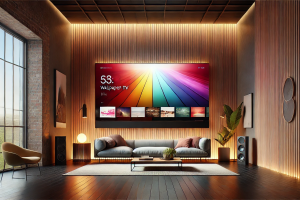Analyzing the iPhone 16 Pro Demand Drop: What’s Behind the Declining Sales?
- Posted by Amelia Johnson (United Kingdom)
- Categories Technology
- Date September 16, 2024
Apple’s iPhone launches are often met with high anticipation, but with the iPhone 16 Pro series, the tech giant faces an unexpected trend: demand for the iPhone 16 Pro is lower than expected. Meanwhile, the iPhone 16 Plus has seen a surprising surge, with pre-orders up 48%. As Apple navigates these shifts in consumer preference, analysts and industry experts, including Ming-Chi Kuo, are offering insights into why the iPhone 16 Pro sales drop might be happening. This blog will dive into the factors influencing the iPhone 16 Pro demand, how it compares to the iPhone 16 Plus, and what these trends mean for Apple moving forward.
iPhone 16 Pro Demand: Lower Than Expected
The iPhone 16 Pro demand has been a significant talking point since its release. Historically, Apple’s Pro models, known for their premium features, tend to outperform their non-Pro counterparts in terms of early sales. However, this year’s data shows a surprising twist. According to Ming-Chi Kuo, a respected Apple analyst, iPhone 16 Pro sales have been lower than expected since the devices became available for pre-order in the U.S. and other countries(91mobiles).
Factors Behind the iPhone 16 Pro Sales Drop
Several factors could be contributing to the iPhone 16 Pro sales drop:
- Delayed Apple Intelligence Features: One of the most anticipated features of the iPhone 16 Pro series was its integration with Apple Intelligence, a suite of AI-driven tools designed to improve usability. However, many of these features were not available at launch, which could have impacted consumer interest(PhoneArena). The delayed rollout, with some features expected to arrive as late as 2025, might have pushed potential buyers to hold off on upgrading.
- Incremental Upgrades: Consumers are also citing “upgrade fatigue.” While the iPhone 16 Pro features several improvements, such as a refined Tetraprism periscope camera and better display technology, these upgrades might not be significant enough to convince iPhone 14 or 15 Pro users to make the jump. iPhone 16 Pro Max buyers, in particular, may not find enough reason to upgrade unless they prioritize camera technology(MacRumors).
- Price Sensitivity: With the Pro models priced higher than the standard iPhone 16, many consumers may have found the $1000+ price tag too steep in comparison to the iPhone 16 Plus or other competitors. Price sensitivity, especially in tough economic climates, is another reason the iPhone 16 Pro demand might be underwhelming.
iPhone 16 Plus Pre-Orders Surge by 48%
In contrast to the Pro models, the iPhone 16 Plus pre-orders have seen a 48% jump compared to the same period last year. While the Plus models are traditionally less popular than the Pro series, this year’s trend is bucking expectations. So, what’s driving the iPhone 16 Plus sales growth?
Why the iPhone 16 Plus is Outperforming the Pro Models
- Price vs. Features Balance: The iPhone 16 Plus offers many of the key features that consumers want, such as a large display, long battery life, and strong performance, at a more attractive price point. The value proposition of the iPhone 16 Plus may appeal to budget-conscious buyers who don’t feel the need for the premium features found in the Pro models(91mobiles).
- Battery Life: The iPhone 16 Plus has long been associated with superior battery life compared to smaller models. For many users, particularly those who prioritize longevity over advanced camera technology, the extended battery life is a crucial selling point.
- Economic Considerations: The iPhone 16 sales comparison suggests that economic factors are playing a role in consumer behavior. Amid rising inflation and economic uncertainty, buyers may be prioritizing the more affordable Plus model over the high-end Pro variants. The iPhone 16 Plus pre-orders reflect this shift in spending habits.
iPhone 16 Pro Features: What Sets It Apart?
Despite the iPhone 16 Pro sales drop, the device offers several cutting-edge features that appeal to high-end users. Apple continues to push the envelope with its iPhone 16 Pro features, focusing on camera technology, display enhancements, and processing power.
Key Features of the iPhone 16 Pro
- Tetraprism Periscope Camera: Exclusive to the iPhone 16 Pro Max, this camera system offers enhanced zoom capabilities and improved photo quality, making it a standout for photography enthusiasts. Despite its impressive technology, this feature alone may not be enough to sway all users(MacRumors)(PhoneArena).
- Apple Intelligence: Apple’s foray into AI continues with the iPhone 16 Pro, although, as noted, the delayed release of its full suite of Apple Intelligence features might have tempered initial excitement(MacRumors). When fully integrated, these features promise to enhance everyday tasks through AI-driven shortcuts, voice commands, and image processing.
- A18 Bionic Chip: The iPhone 16 Pro features Apple’s latest A18 chip, which provides faster performance and better energy efficiency. However, for many users, these performance upgrades are marginal improvements over the A17 chip, leading some to question whether an upgrade is necessary.
iPhone 16 Pro vs. iPhone 16 Plus: Which Should You Choose?
With the iPhone 16 Pro vs iPhone 16 Plus comparison being a hot topic, many consumers are trying to determine which model is the better fit for them. While both models share similarities in core functionality, such as the A18 Bionic chip and improved battery life, they also cater to different types of users.
Pros and Cons of Each Model
- iPhone 16 Pro: Ideal for users who prioritize cutting-edge technology, especially when it comes to camera performance and display quality. The iPhone 16 Pro features like the Tetraprism camera and Apple Intelligence will eventually set it apart, but the question remains whether these upgrades are worth the higher price for most consumers.
- iPhone 16 Plus: Best for users looking for a large screen, long battery life, and solid performance without needing the Pro-level features. The iPhone 16 Plus sales growth reflects its appeal to a broader consumer base, particularly those looking for value over premium specs(91mobiles)(PhoneArena).
The Impact of Ming-Chi Kuo’s Analysis
Much of the industry’s understanding of Apple’s sales trends comes from the insights of analyst Ming-Chi Kuo, who has been following Apple’s supply chain and consumer behavior for years. His analysis of the iPhone 16 Pro demand suggests that Apple’s Pro models may need to focus more on significant feature differentiation if they are to regain their top-tier sales performance(MacRumors). Meanwhile, the iPhone 16 Plus sales growth demonstrates the shifting dynamics within Apple’s customer base.
Kuo’s insights indicate that Apple might need to reconsider its pricing and feature set for the iPhone 17 lineup, particularly if consumer preferences continue to lean toward value over premium features(91mobiles).
The Future of iPhone 16 Pro and iPhone 16 Plus
While the iPhone 16 Pro demand has been lower than expected, the iPhone 16 Plus pre-orders reflect a growing shift in consumer priorities. The Plus model’s balance of features, performance, and price has resonated with a broader audience, while the Pro models face the challenge of justifying their premium price tag in a competitive market.
Apple will likely use the insights from this year’s sales trends to inform future product strategies, especially with the delayed rollout of Apple Intelligence and the evolving economic landscape. Whether Apple can reignite demand for the iPhone 16 Pro remains to be seen, but for now, the iPhone 16 Plus is enjoying its moment in the spotlight.
For more insights into Apple’s latest tech trends and market shifts, visit Regent Studies. To read more about the current state of iPhone 16 sales, check out this PhoneArena article.
As Apple continues to navigate these trends, it’s clear that consumers are looking for value and innovation—but finding the right balance may be the key to future success.
Previous post
Pixel 9 Pro Fold Durability: How It Handles Bending and Everyday Use
Next post
Royal Family Shares Heartfelt Messages for Prince Harry’s 40th Birthday
You may also like




